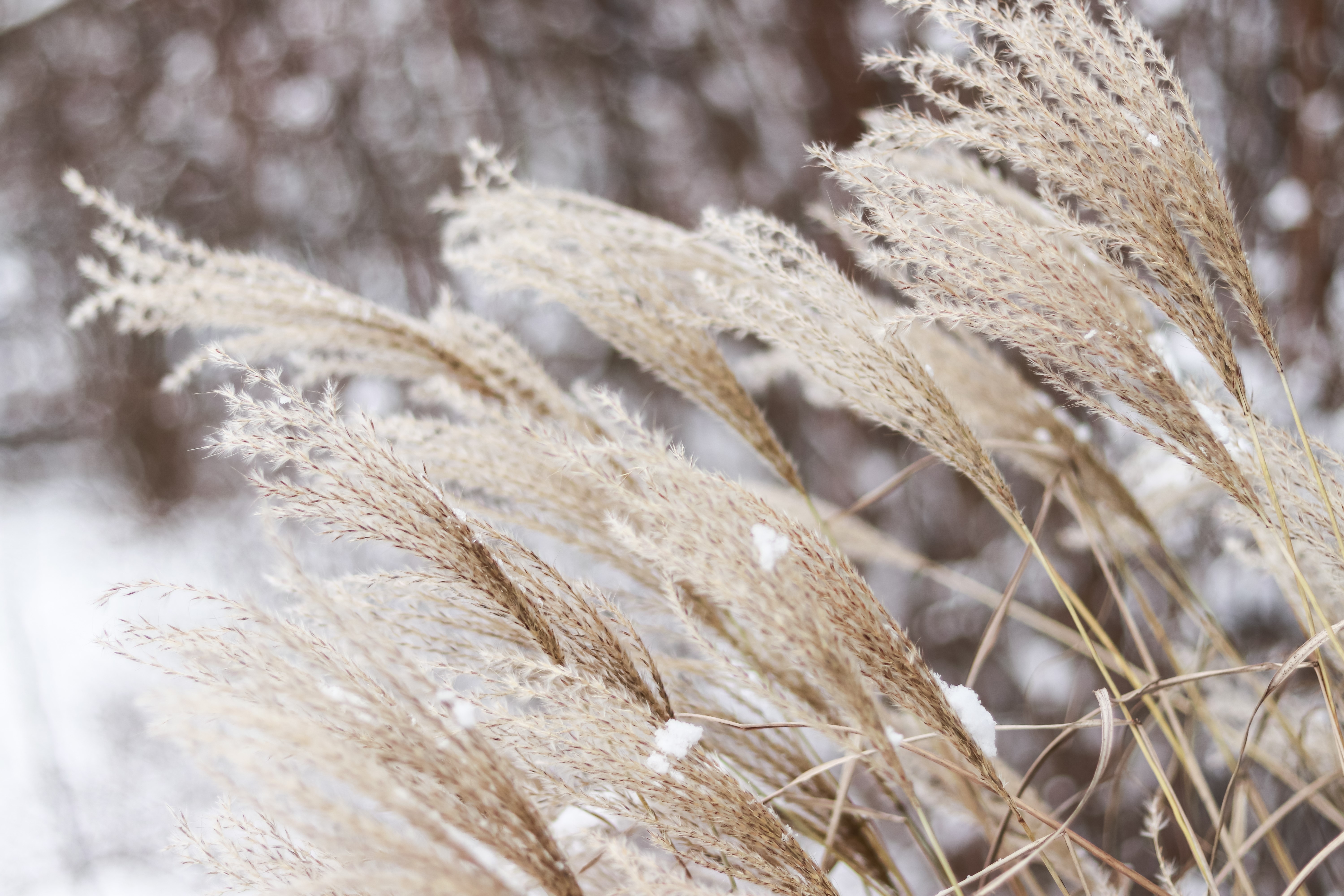Perennials have become increasingly popular in home landscaping due to their low maintenance nature and dramatic aesthetics in the winter. They come in various shapes and sizes that are eye candy through any season of the year, making it a fitting centerpiece or accent plant in your garden or flowerbed. Some of the most popular ones include hostas, liriope, daylilies, hydrangeas, sage, cone flowers, astilbe and ornamental grasses. One of the most common questions clients seem to have about perennials is when the best season is to begin pruning.
Choosing when to cut your perennials is a matter of the gardener’s preference. It is a popular choice to leave them be until spring, for many believe it enlivens their garden during the gloomy months of winter. For  example, ornamental grasses provide texture, contrast and color against the crisp white snow. Aside from adding interest to an otherwise grim and somber backdrop, ornamental grass left standing to blow freely in the winter winds makes a great refuge and provides treats and nesting materials for surrounding wildlife that stay to bear the winter months.
example, ornamental grasses provide texture, contrast and color against the crisp white snow. Aside from adding interest to an otherwise grim and somber backdrop, ornamental grass left standing to blow freely in the winter winds makes a great refuge and provides treats and nesting materials for surrounding wildlife that stay to bear the winter months.
Others, however, feel most perennials are an eye sore to their garden if left alone over the winter months. The raggedy, visually unappealing browning foliage and bare flower stalks is better thought of as being confined to the trash or sent off to a compost. Some also think it’s easier to cut the tops of plants when they are still relatively fresh and upright in the fall.
If you desire the contrast your perennials give off against the stark winter sky, cutting in early spring before you start to see the emergence of new growth and after the last snow is your best option for pruning. For spring pruning, plan to get dirty in your garden around March before you start applying mulch to your landscape beds.
For those that think the gold, lifeless perennials need to go in autumn, cutting back in late fall when the leaves have melted down and become yellow— typically after the first frost— is the ideal time to do so.
Here are some tips on cutting back your perennials, no matter your seasonal preference:
For ornamental grass, one of the simplest ways to cut is to grab the grass about two feet high, twist as tight as
possible and make a cut six to twelve inches off the ground. If the sharpness of the blades have you nervous to- For perennials such as hostas or liriope, the tops can be pulled out by hand.
- Woody perennials, such as hydrangeas and sage, are better cut back using a form of mechanical trimming. Be sure to cut these all the way down—nothing visible above ground.
A big perk to cutting back your perennials is to gain a crisp, clean look, allowing your plants to focus its energy in the roots. If you are unsure about when, what and how to prune, don’t prune it! Instead, give our professionals at Bluegrass Landscaping a call to help you with your lawn care maintenance needs! We are committed to simplifying your life and delivering high quality work!
Related Sites
Cutting Back, Dividing And Preparing Ornamental Grasses For Spring. (2014, February 24). Retrieved from Old World Garden Farms: http://oldworldgardenfarms.com/2013/02/24/cutting-back-dividing-and-preparing-ornamental-grasses-for-spring-the-sunday-farm-update/
Fall Garden Minatenance: Pruning And Dividing Ornamental Grasses & Perennials. (2010, September 27). Retrieved from A Guide To Northeastern Gardening: http://landscapedesignbylee.blogspot.com/2010/09/fall-garden-maintenance.html#.VnLHKBUrKUk
Kittek, S. (2013, October 25). Should you cut back grasses, perennials and shrubs in the fall? Retrieved from The Morning Call: http://articles.mcall.com/2013-10-25/entertainment/mc-cut-back-plants-winter-grasses-20131025_1_plant-grass-mulch
Perennials, H. (2015, October 13). Preparing the Garden for Winter. Retrieved from Perennials.com: http://www.perennials.com/content/preparing-the-garden-for-winter/




